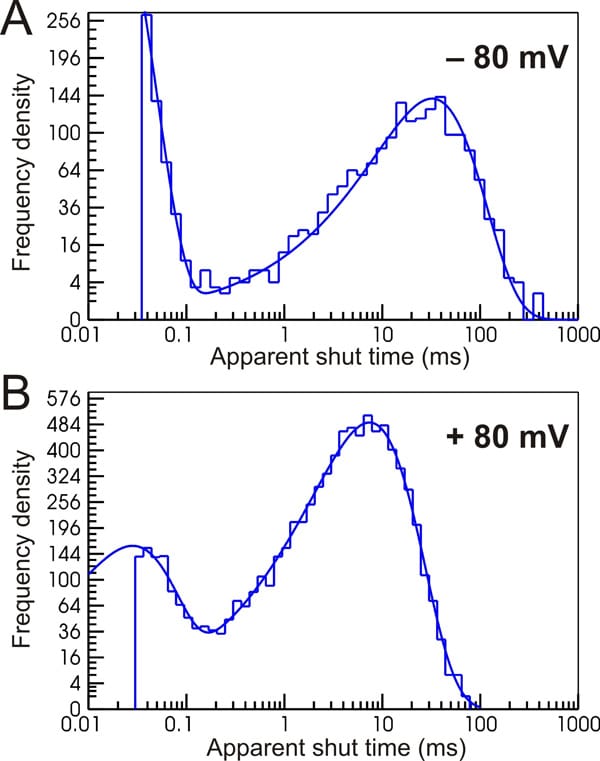Advances in our understanding of the structure of ligand-gated ion channels have given new relevance to the question of what biophysical properties determine the efficacy of an agonist. In addition to that, series of agonists of different efficacy are useful in the investigation of the molecular effects of channel mutations. Because of this, we have analysed the properties of single-channel activity elicited by choline on human recombinant muscle nicotinic acetylcholine receptors. Choline is a particularly interesting example, as it is thought to have a low efficacy (gating constant ≈ 0.05) because of a slow channel opening rate constant (Grosman & Auerbach, 2000). This makes it particularly attractive as a tool in the characterization of mutations that facilitate gating and increase the channel opening rate constant beyond its wild-type value of about 50000 s−1 for ACh. It has been used widely for this purpose (e.g. Mitra et al., 2005). The quantitative understanding of choline activation of ACh receptors poses special challenges, because choline blocks the channel pore at concentrations that are similar to those that activate it, and it produces a very fast channel block. According to the conventional view that choline has a slow opening rate, it should not produce openings in bursts. Both the slow opening rate constant, and the rapid dissociation that is expected of a low affinity agonist like choline, should prevent the channel from re-opening. The single channel record should, therefore, contain very few short shut times, of the sort that separate re-openings of the channel with more potent agonists (Colquhoun & Sakmann, 1985). However we see a clear component of brief shut times that are not predicted by this conventional view (Figure 1). These brief shuttings cannot all result from brief channel blockages because they are clearly seen at positive membrane potentials. The conventional view of the action of choline is clearly wrong, and some possible explanations will be discussed. For example, partial agonism could arise not because of low efficacy for the gating step, but because of low efficacy for a pre-opening conformation change of the sort that has been invoked for glycine receptors (Burzomato et al., 2004). Alternatively the low maximum response evoked by choline could result from occurrence of a more complex form of channel block than the obvious very fast block. Preliminary evidence from fast concentration jumps does not support the latter view. Figure 1. Shut time distributions, 10 mM choline on recombinant human nicotinic receptors.
Life Sciences 2007 (2007) Proc Life Sciences, PC180
Poster Communications: Why are partial agonists partial?
R. Lape1, L. Sivilotti1, D. Colquhoun1
1. Pharmacology, UCL , London, United Kingdom.
View other abstracts by:
Where applicable, experiments conform with Society ethical requirements.

